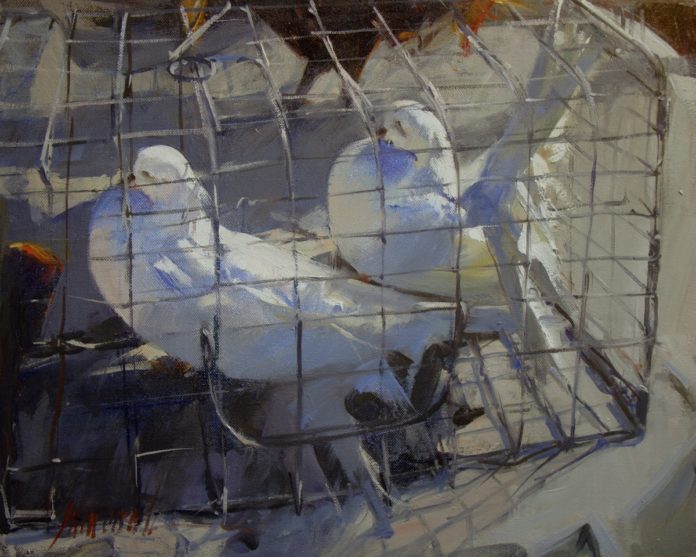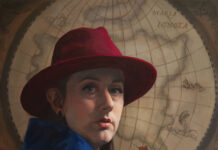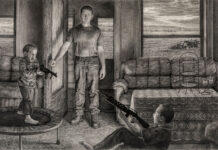intro
Editor’s Note: The following was originally written and published in 2013, but still provides an interesting perspective on teaching art workshops. We hope you enjoy.
My Apology for Not Doing Workshops
BY JOHN COOK
My approach to producing a painting is with a direct stroke, with brush or painting knife, and with minimal blending gradation. Sometimes my canvas will lean more to a brush effect, and often with a prevailing knife effect. I concentrate a lot on the effect of edges—lost ones for movement or softness of mood, and cleanly defined ones for stark contrast and structure.
I concentrate on planes in the form of the subject, to capture the light, and define the image. When painting a person’s face, I do not spend multiple hours or sessions refining the features. Instead, I find myself painting a face relatively quickly, applying the paint almost at an arm’s length, and not lingering on detail.
If it doesn’t “work” for me I will scrape the area down, leaving the underpainting and rework it, correcting any drawing or proportion issues, generally painting it again, and again, and as many times as it takes to satisfy me. Sometimes this is an exasperating procedure, and takes its toll on me emotionally. An example would be the portrait of the Native American girl titled “Red Dress.” I painted the face multiple times (six or seven) until I pulled off the last version in 30-40 minutes.
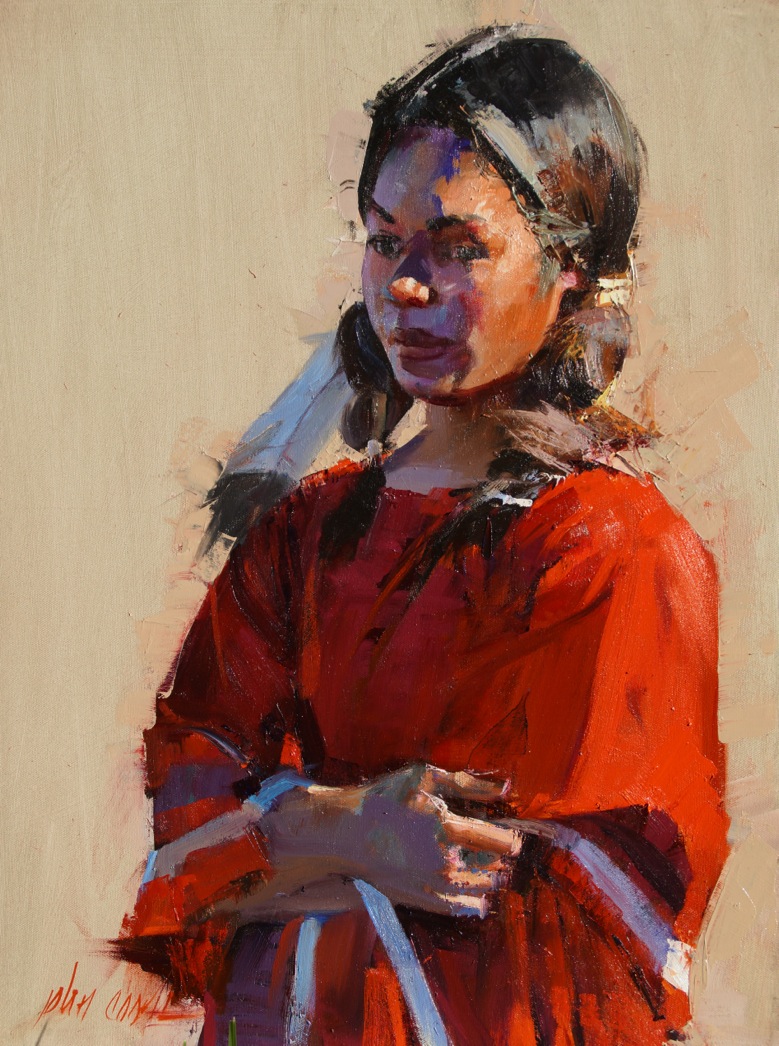
I say this to benefit other artists who might try to follow my approach—it’s not easy to explain. I’m sure I would be self-conscious if others watched me during the process—they might wonder if the painting is ever going to happen!
I often put aside “failed” canvases to use the unfinished piece as an underpainting for a totally new subject. Usually I invert the canvas and begin drawing the new image with a brush. A good example of this is “White Cat.”
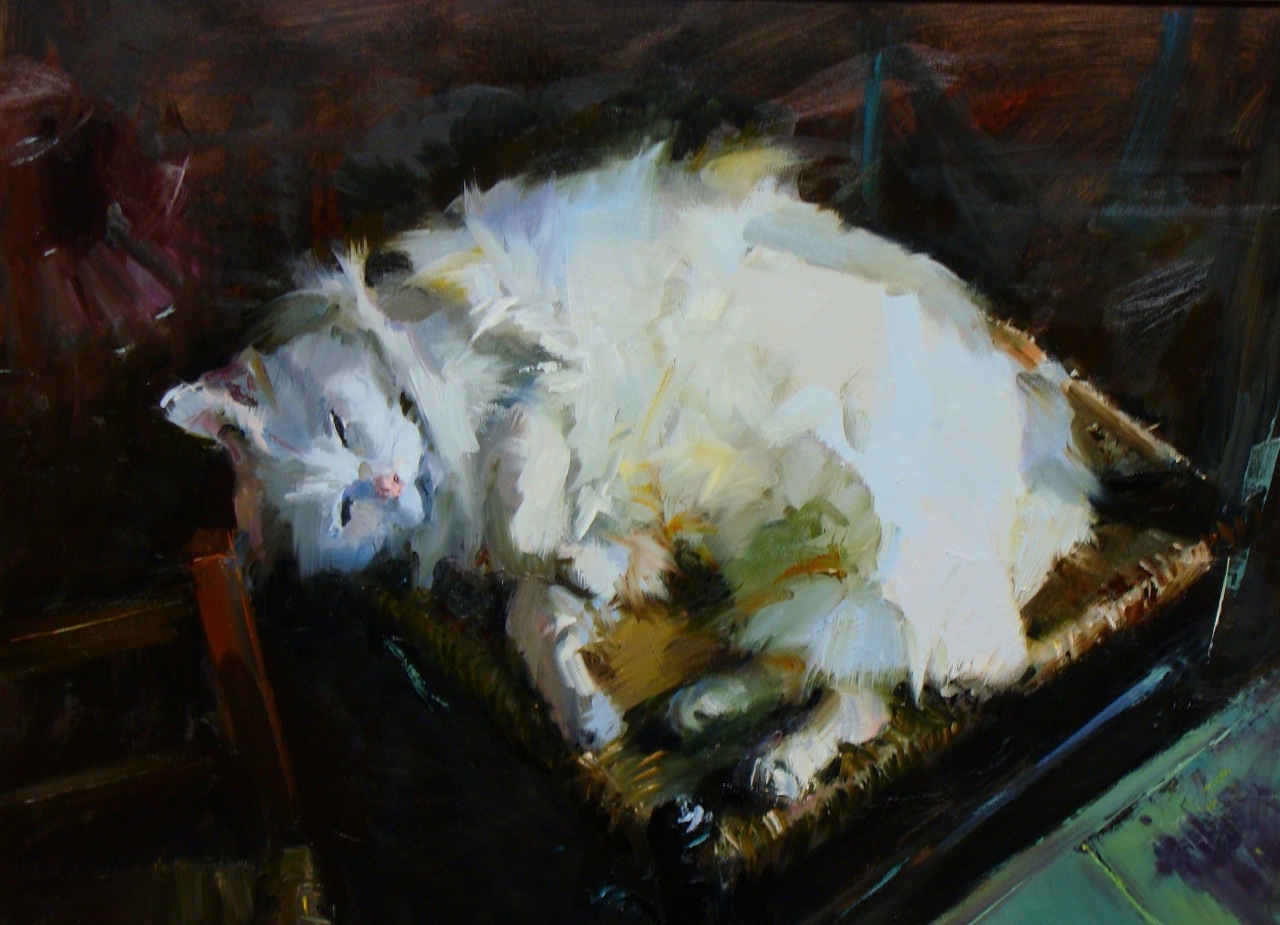
Additional pieces like “Stogie” and “Braids” resulted from the same process. It should be noted that both of these paintings happened much easier for me without the repetitive repainting. “Braids” happened to come together very quickly, and I was finished. I would love to have this occur much more often! They both happened to sell quickly as well, thankfully. Incidentally, so did “Red Dress.”
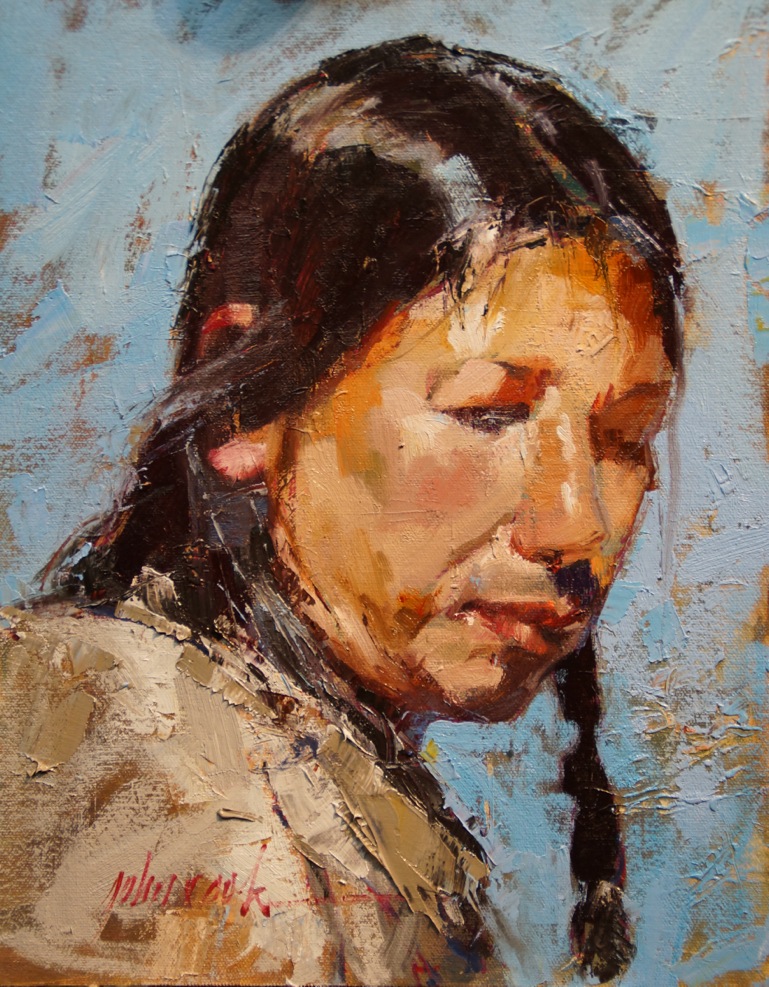
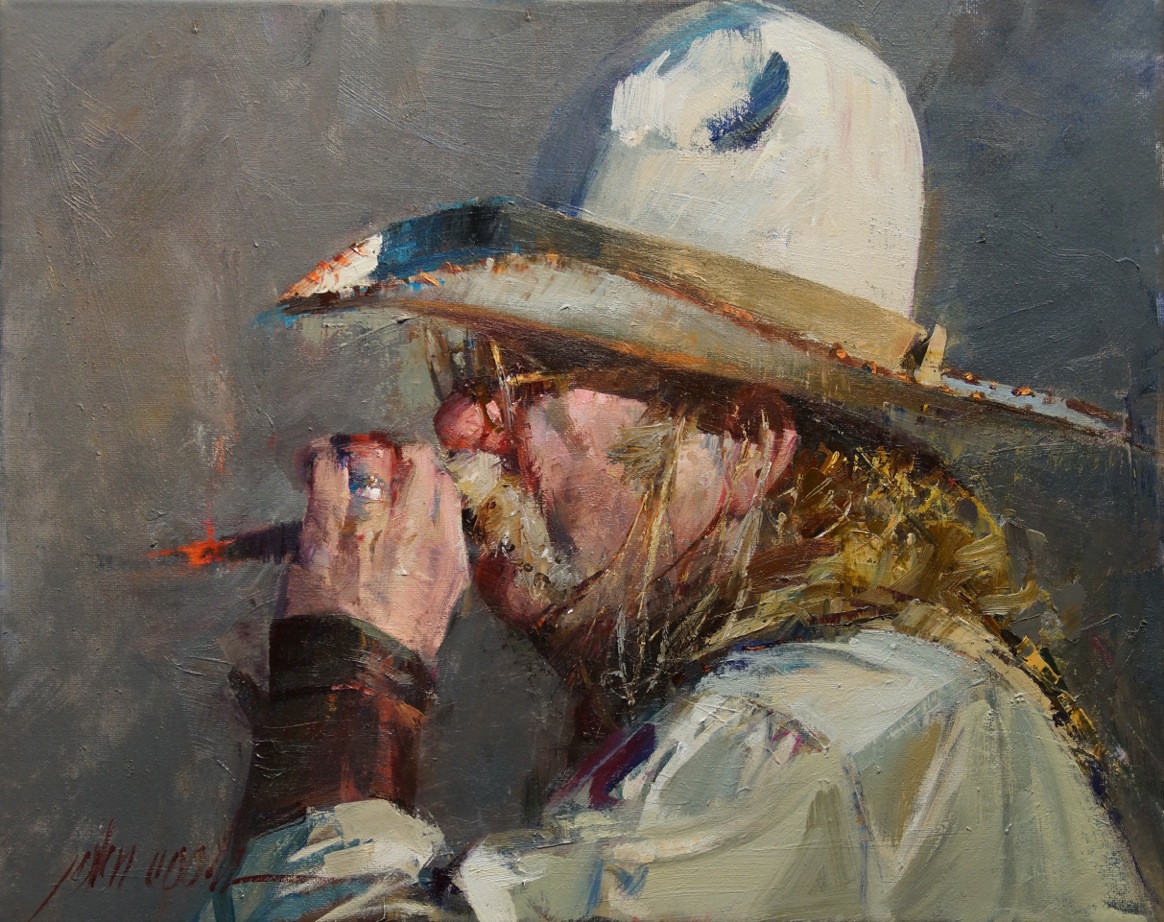
I’m thinking this approach would confuse folks if I should present it in a workshop as a way to paint. Personally it is a mystery to me that I can carve out these images from such a distracting background, but some of my personal favorites come from this exact process. Go figure!
I should confess here I probably would also be distracted in a group setting, because of the intense concentration needed to pull this off. I regret my lack of confidence in this situation. This is the reason I show my progressions of a canvas sometimes. A great friend and portrait painter James Tennison, after seeing some progression shots, commented, “I still don’t know how the heck you do this!”
I love to paint still life pieces. Usually they are simple images with one or two elements. Most are 16 x 20 inches, up to 24 x 30.
Some of the best times in my painting life are my plein air experiences. Painting outside almost anywhere, if the weather is gorgeous, is one of the greatest feelings I’ve had as a painter. Truly I thank God for the opportunity to experience this. Yes, indeed, I must add.
I’ve included a couple of shots showing the actual paint box set up, and one of my favorite pieces is the plein air piece with a boat in view and the finished panel on the easel in the foreground. I used the knife a bit on this piece. I’ve forgotten the name I gave it just now. I’ll call it “Forgotten.” Another great friend bought this as a Christmas gift for her husband.
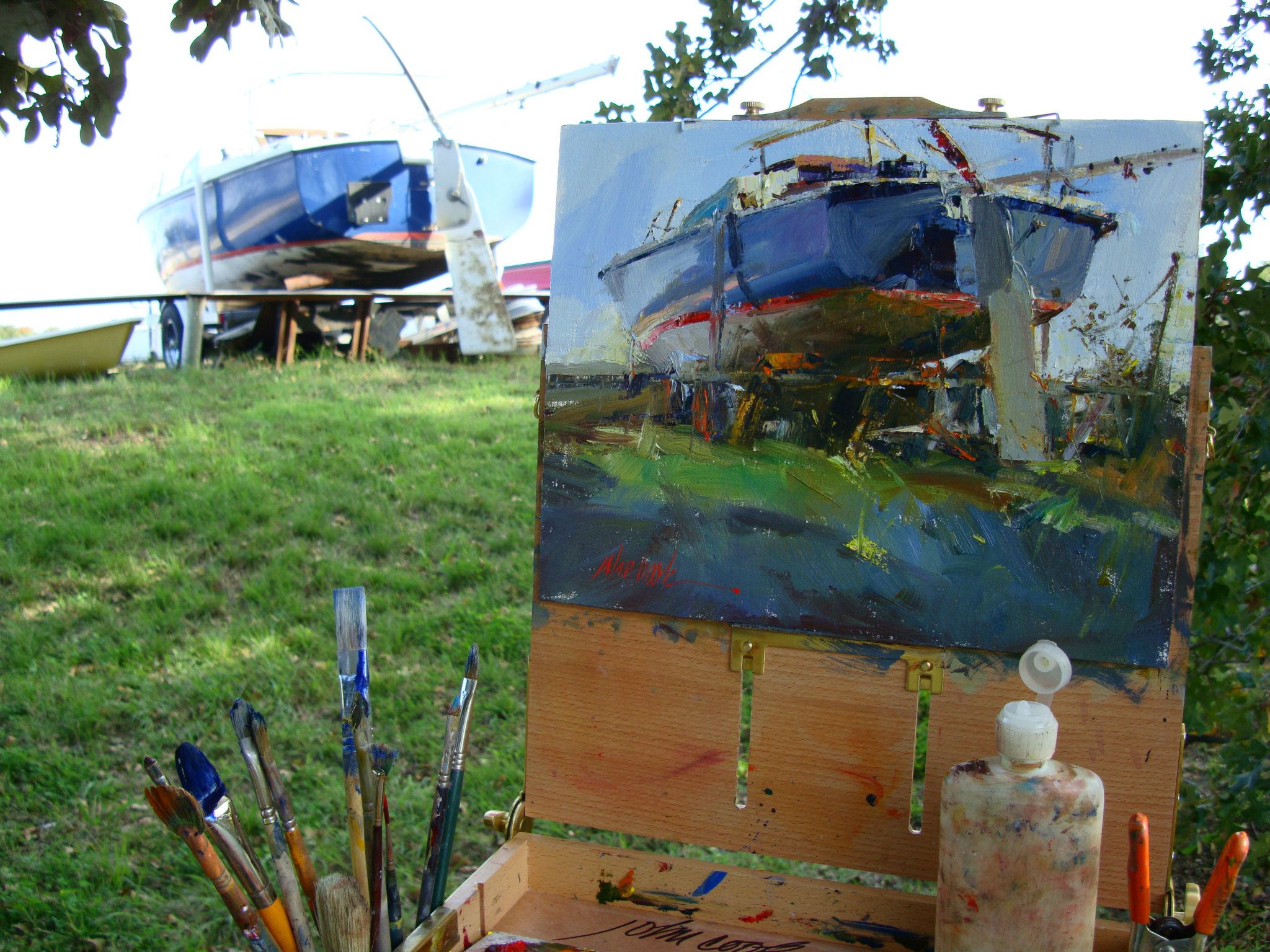
The pochade box shown holds 6 x 8 inch panels. I made it from a small cigar box. It is extremely light. The panel shown is called “Deserted House.” It is in my personal collection.
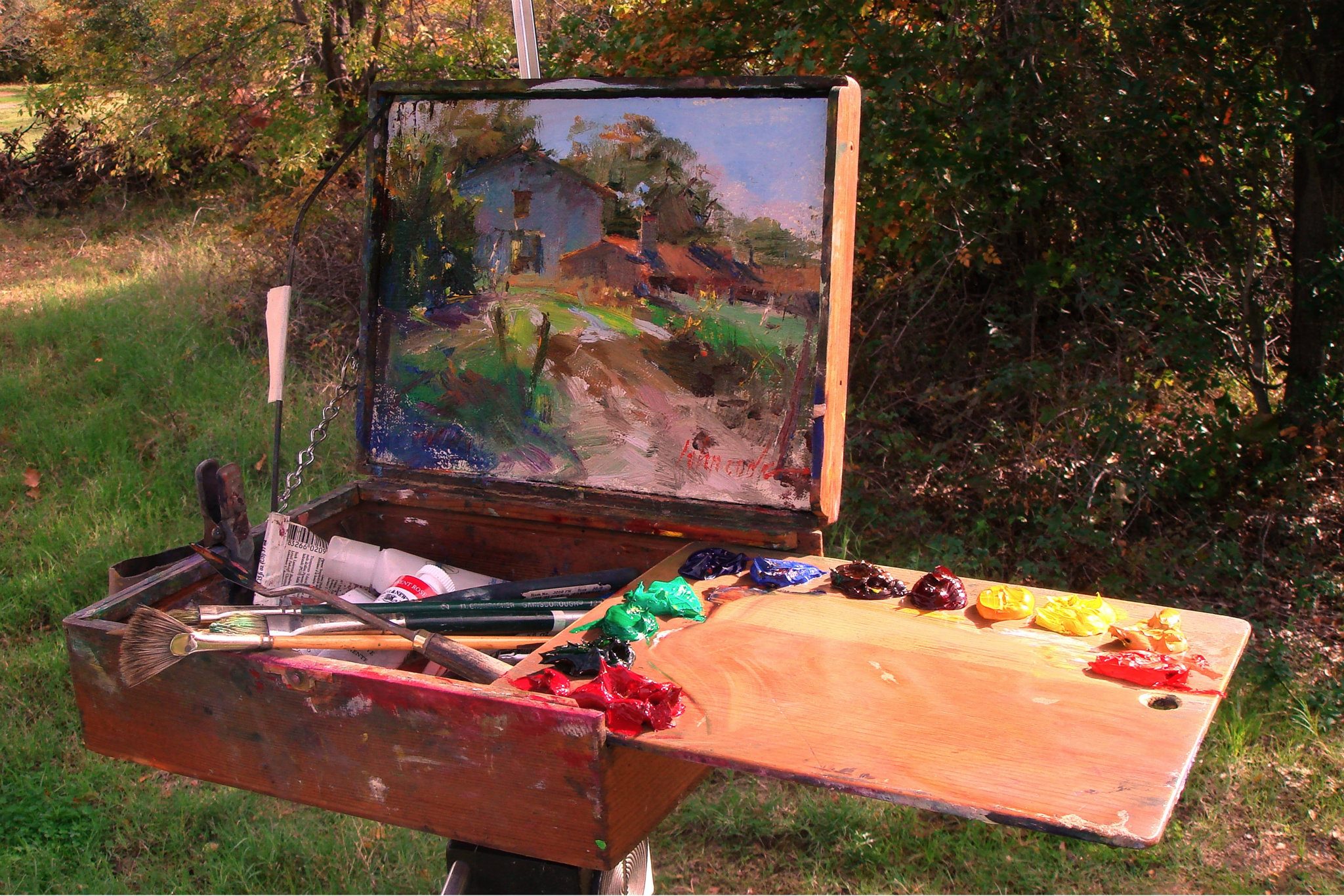
I’ve included a plein air piece I painted from the front seat of my truck (à la Trevor Chamberlain), as well as a photo of the scene showing “what I saw.” “Nowlin’s Farm” is what I painted. The right side background structure—the silo tower shape—is a product of my imagination. There is also lots of knife work on this piece. I’ve had a lot of comments on Facebook about this piece, with a great response to the actual scene, and my interpretation.
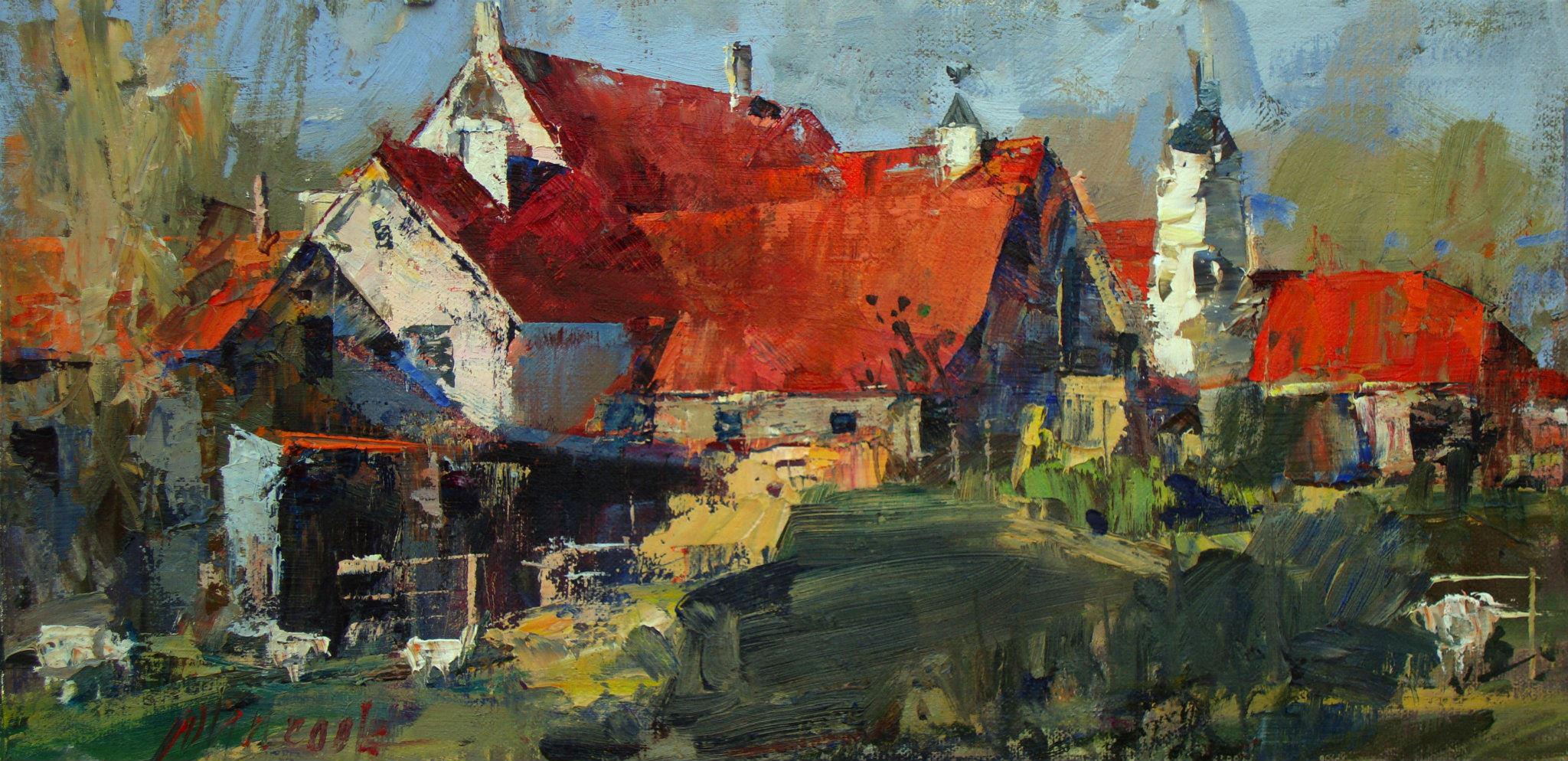
I just don’t know if this intuitive approach can be taught to others. I think I see things—and scenes—pretty much the same as other artist friends, but when painting with a friend at the same location, I’m often asked “Were you both at the same place?” My “take” sometimes is, to say the least a bit “personalized.”
How do I explain that?
Visit EricRhoads.com (Publisher of Realism Today) to learn about opportunities for artists and art collectors, including: Art Retreats – International Art Trips – Art Conventions – Art Workshops (in person and online) – And More!


